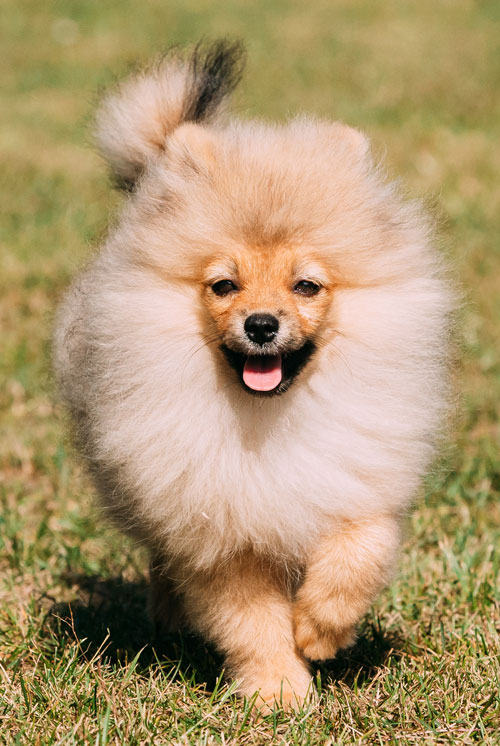 What is tracheal collapse?
What is tracheal collapse?
Tracheal collapse is a common cause of coughing and airway obstruction in dogs. The trachea, which is also known as the “windpipe”, provides the air supply from the outside to the lungs. The trachea can be thought of as resembling a vacuum cleaner pipe. It is a flexible but firm tube that is reinforced by strong cartilage rings. These rings are not complete but rather “c-shaped”, with the open end of the “c” facing to the inside of the neck with a ligament attaching from the one end of the C to the other. Sometimes these cartilage rings weaken and cannot hold their shape causing the trachea to narrow or even close, making it more difficult for air to pass through.
Which dogs are prone to tracheal collapse?
The small and toy breed dogs are most commonly affected by this condition. Yorkshire terriers, Toy Pomeranians, Poodles and Chihuahuas are some of the most commonly affected breeds. Young dogs can be affected but the condition is more commonly seen in middle-aged to older patients. These dogs are often overweight and living in a household that has smokers often exacerbates the condition.
What are the signs of tracheal collapse?
- The dog often has a characteristic “goose honking” cough.
- The dog may cough when picked up or pulled on a collar.
- Some dogs may have difficulty breathing and some turn blue when excited.
- There is usually a degree of exercise intolerance and a wheezy noise may be heard when the animal breathes in.
- The cough and other signs are often worsened with excitement, eating, drinking, tracheal irritants such as smoke, dust or pollution, obesity, exercise and hot and humid weather.
Diagnosing tracheal collapse
The clinical signs and breed of dog make a diagnosis of tracheal collapse highly likely. X-rays can be helpful in making a diagnosis but the collapse of the trachea is often dynamic so may not be seen all the time. Fluoroscopy is a moving x-ray and is beneficial in that the trachea can be visualised over a short period of time. Unfortunately, fluoroscopy is usually only available at veterinary teaching hospitals and some veterinary referral centres. Using a scope is the only way one can see what is happening within the trachea and may also be useful as swabs and cultures can be taken to make sure there is not a secondary infection present concurrently.
Can tracheal collapse be confused with other conditions?
Tracheal collapse can definitely be confused with other upper respiratory tract conditions of which the most common one in toy breeds is arguably reverse sneeze. Kennel cough, an infectious viral condition of the upper respiratory tract is another. Allergies are another common cause of upper respiratory tract conditions. A foreign body like a grass awn which gets stuck somewhere in the upper or lower respiratory tract is another possibility. To differentiate which condition your dog may be suffering with will most likely require a thorough clinical examination and diagnostic workup by the vet.
Can tracheal collapse be cured?
Unfortunately, tracheal collapse cannot be cured but it can be managed relatively successfully. Medical management includes medication to suppress the cough, reduce airway inflammation and spasms, and reduce anxiety. Weight loss is probably the most important aspect of management in overweight pets as obesity greatly exacerbates the condition.
In some cases, surgery may be an option to help support the trachea. It is a specialist procedure and an animal will still need to be managed medically afterwards. Surgery does come with its own risk so it is important to speak to an experienced surgeon before travelling down this route. It is also important to remember that not all animals will be ideal candidates.
At present, there is no known way to prevent tracheal collapse but maintaining an ideal weight and reducing exposure to airway irritants such as smoke have been found to help. Patients may be managed relatively efficiently with medical management and it is estimated that more than two-thirds of dogs will show some improvement. About three-quarters of dogs will improve with surgical treatment but the surgery does also carry its own risks. Older dogs may also have laryngeal or bronchial disease. This also comes with complications and does reduce the long-term prognosis for management. Weight management and control of the cough is vital for a good outcome and it is important to remember that medical management is still instrumental even after surgical treatment.
There is a strong school of thought that suggests tracheal collapse may be inheritable because it is related to the shape and confirmation of the trachea. Just like you may find some dogs have longer legs and some have shorter legs, so some of the toy breeds may have narrower tracheas than others. It would certainly stand you in good stead to do some proper research before buying a highly pedigreed toy breed of dog.
If you are not sure if your dog may be suffering with tracheal collapse, visit the vet and have a proper exam done. It may just improve the quality of life of your best friend.
© 2019 Vetwebsites – The Code Company Trading (Pty) Ltd


